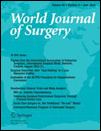The ALPPS Procedure: A Surgical Option for Hepatocellular Carcinoma with Major Vascular Invasion
Abstract
Background
Hepatocellular carcinoma (HCC) tends to have a particular invasiveness toward the portal vein (PV) branches and hepatic veins. This situation can hamper major surgical resection with a risk of postoperative liver failure due to the small future liver remnant (FLR) in cirrhotic livers. These patients are then usually directed to palliative treatments with poor results. The associating liver partition and PV ligation (PVL) in staged hepatectomy (ALPPS) strategy is one of the main surgical innovations in recent years in the field of liver surgical oncology. The ALPPS approach could allow surgical resection in patients with HCC and associated major vascular invasion.
Methods
Among 1,143 liver resection performed in our center, the ALPPS approach was employed in order to induce rapid hypertrophy of the left FLR in patients with HCC and associated major vascular invasion. This strategy consists of combining the in situ splitting of the liver along the main portal scissura or on the right side of the falciform ligament and PVL in a strategy of staged hepatectomy.
Results
In our experience the ALPPS approach allowed us to achieve a sufficient FLR in two cases of HCC with major vascular invasion, in which the classic two-stage strategy could not be applied. In both cases the patients could undergo major hepatectomies without mortality.
Conclusions
This novel strategy could expand the number of patients undergoing major liver resections that were previously considered non-resectable because of the risk of liver decompensation for an insufficient FLR.




